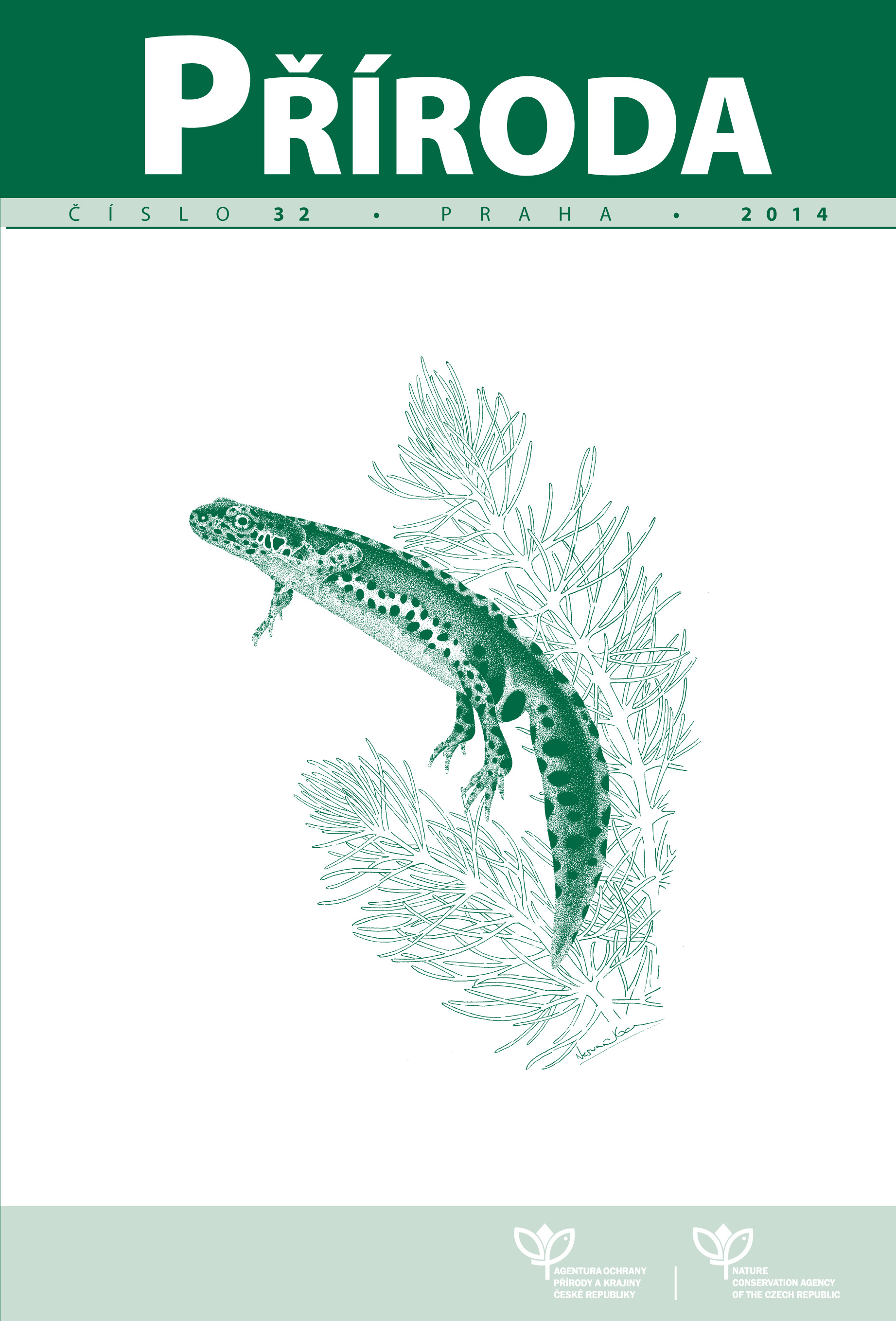Sledování sukcese vegetace na štěrkových lavicích v území EVL Řeka Ostravice v letech 2008–2010
Monitoring of vegetation succession on gravel bars in the area of the Ostravice River SCI in the years 2008–2010
Klíčová slova:
monitoring, přírodní biotopy, řeka Ostravice, sukcese, štěrkový náplav, gravel bed, natural biotopes, Ostravice River, successionAbstrakt
Příspěvek seznamuje s dílčími výsledky výzkumu, který se zabývá vývojem vegetace na štěrkových náplavech na území evropsky významné lokality Řeka Ostravice. V přirozených podmínkách bez zásahu člověka směřuje vývoj vegetace na štěrkových náplavech od mezernatých bylinných porostů raných sukcesích stádií přes stádia poměrně zapojené bylinné vegetace a keřových vrbových porostů k lužním lesům. Zarůstáním náplavů vegetací, zejména dřevinami, dochází k jejich stabilizaci. V intenzivně obhospodařované a osídlené nivě jako je území v okolí měst Frýdek-Místek a Frýdlant nad Ostravicí, představují zarůstající náplavy v upraveném korytě řeky Ostravice pro správce toku potenciální nebezpečí především v průběhu povodní. Správce takové lavice zpravidla odstraní a současně obnoví původní parametry průtočného profilu. Pokud však dochází k neustálému ochuzování ekosystému toku o zdroje splavenin, zvyšuje se riziko zániku biotopů vázaných na štěrkové náplavy. Podnikem Povodí Odry byl již v roce 2008 připraven postup na modelovou údržbu štěrkových lavic, který je založen na blokování sukcese a předpokládá pouze částečné odstranění svrchní vrstvy sedimentů spolu s vegetačním krytem. Uvedená údržba proběhla na šesti modelových štěrkových lavicích v úseku toku řeky Ostravice (ř. km cca 15,5–42 km) v průběhu roku 2009–2010. Pro zhodnocení vodohospodářských zásahů je nezbytné systematické sledování vývoje vegetace po provedené údržbě. Vlastní výzkum spočíval ve zmapování vegetace před vlastním zásahem a v průběhu několika následujících let byl monitorován vývoj vegetace a ověřovány závislosti druhové diverzity vegetace a stavu sukcese na stanovištních podmínkách. Výsledky výzkumu mohou mít tak současně praktický význam, který spočívá především v ověření a upřesnění managementu evropsky významných biotopů.
Abstract
The article presents partial results of the research dedicated to the monitoring of vegetation succession on gravel bars in the area of the Ostravice River which belongs to the European Sites of Community Importance. Vegetation succession on gravel bars under natural conditions without human intervention proceeds from early succession stages with unconnected herbaceous vegetation through stages with slightly connected herbaceous vegetation and willow shrubs to floodplain forests. Becoming overgrown by vegetation, mainly woody species, stabilizes the gravel bars. In the intensively used and populated floodplain, such as the surroundings of the towns of Frýdek-Místek and Frýdlant nad Ostravicí, the overgrown gravel bars found in the regulated course of the Ostravice River represent a potential risk, especially during floods. The Water Management Body usually removes them and restores the original parameters of the flow profile. However, repeated elimination of the sources for sedimentation represented by gravel bars increases the risk of destruction of the biotopes bound to them. In 2008, the Water Management Body of the Odra Catchment prepared a methodology for the management of gravel bars. This methodology aims at blocking succession by partial removal of the upper sediment layer and vegetation. The management was carried out at six model gravel bars in the reaches of the Ostravice River (river km 15.5 – 42) during 2009 and 2010. To evaluate the planned management activities and their impact it is necessary to systematically monitor vegetation on the affected gravel bars. The research into vegetation on the gravel bars consists of vegetation mapping before the management intervention, monitoring vegetation development during the following years and verification of the relationships between species diversity, succession stages and the biotope conditions. Results from the research thus can also have practical meaning – verification and specification of the management at the European Sites of Community Importance.
